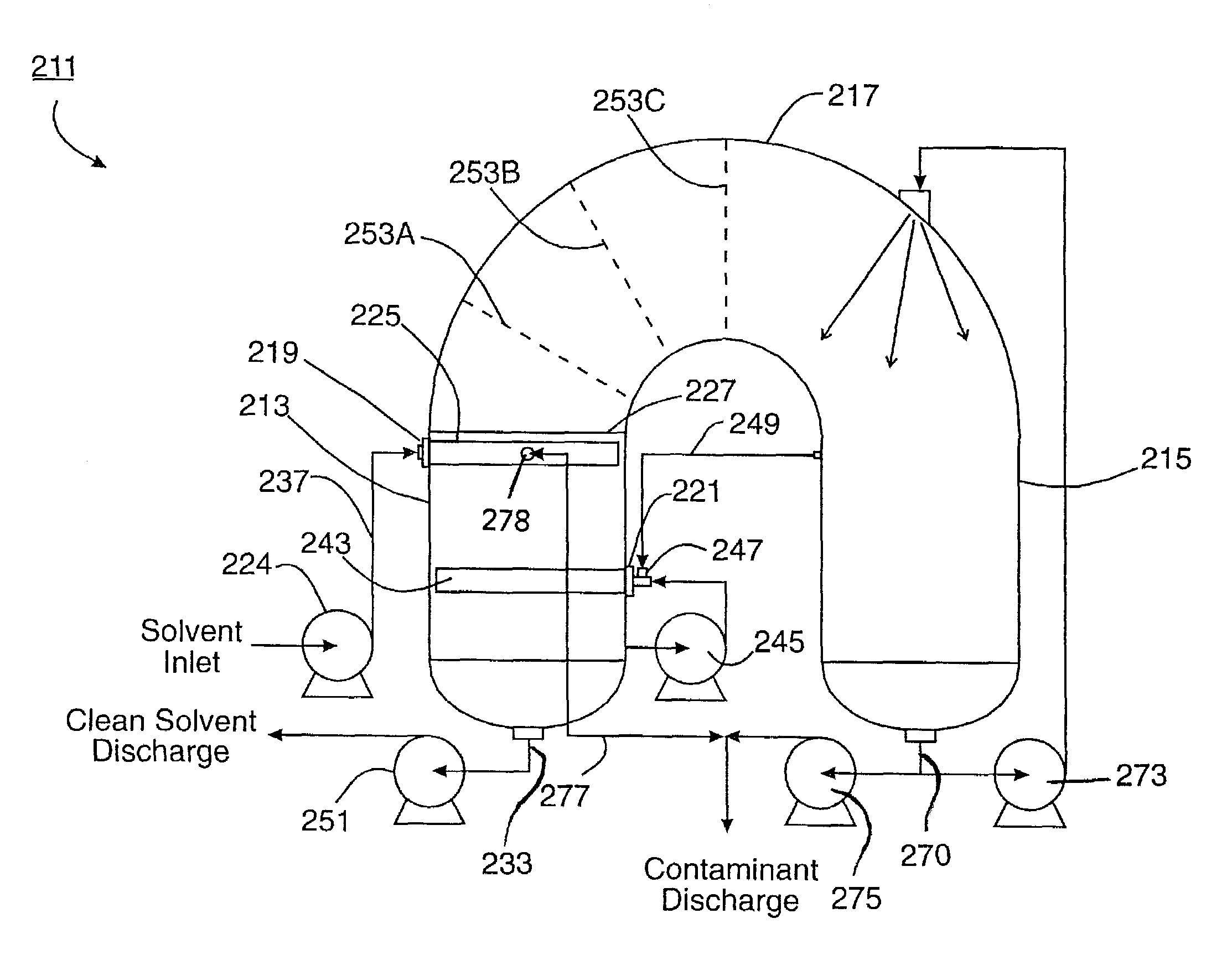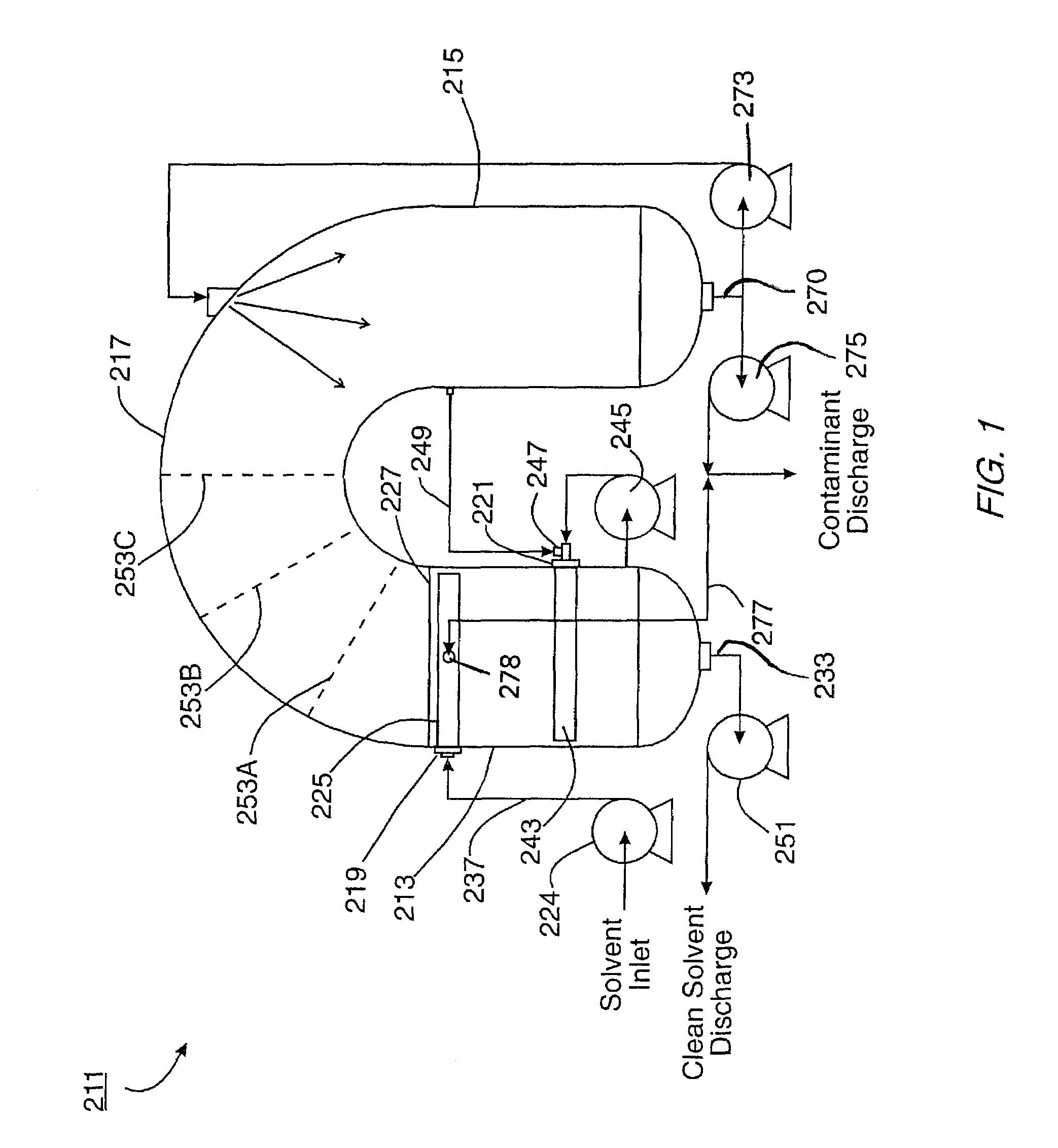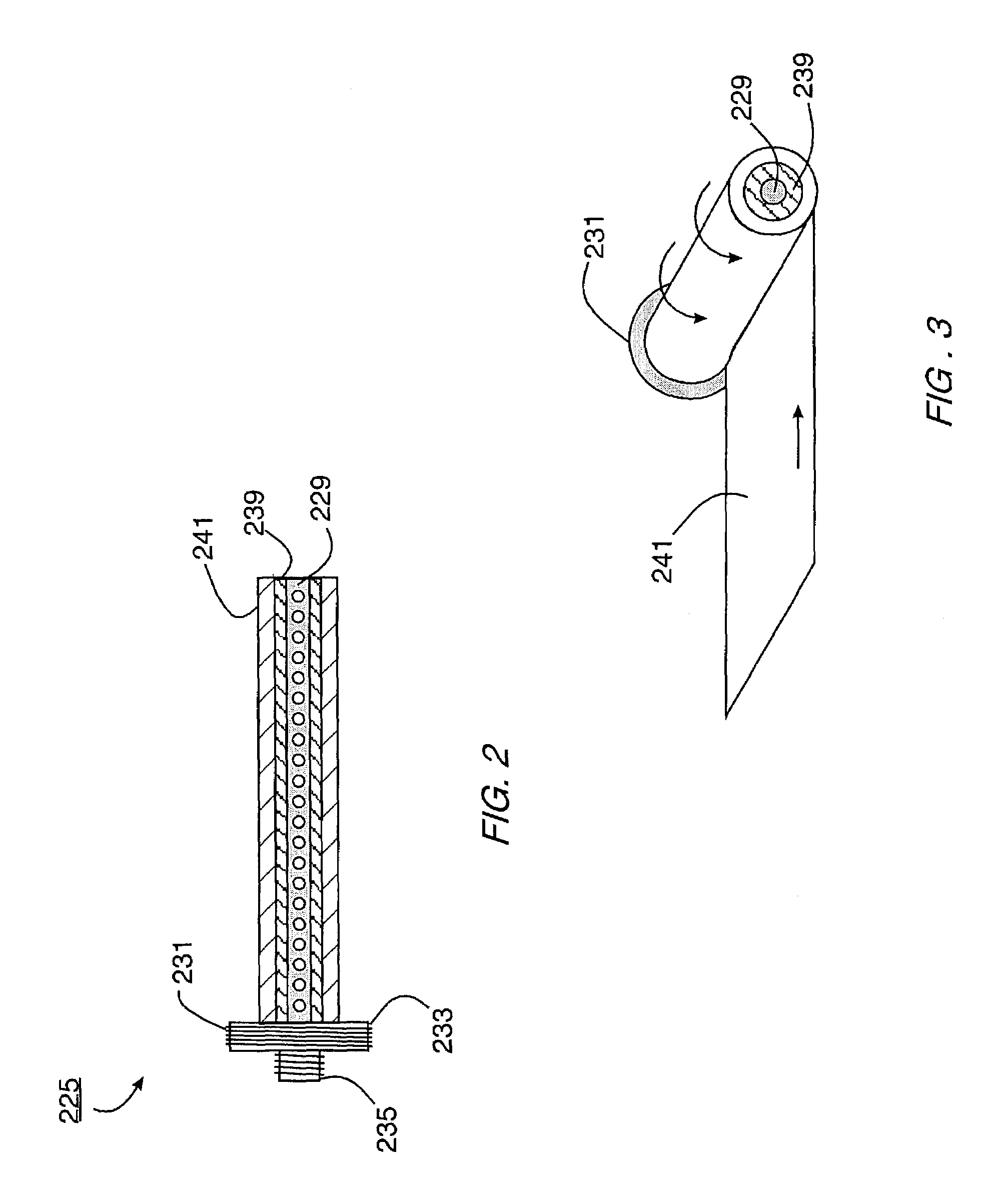Method and apparatus for removing foaming contaminants from hydrocarbon processing solvents
- Summary
- Abstract
- Description
- Claims
- Application Information
AI Technical Summary
Benefits of technology
Problems solved by technology
Method used
Image
Examples
Embodiment Construction
[0055]The present invention is used to remove contaminants, such as surfactants, from solvent that is in turn used to process hydrocarbon gas (such as natural gas). A predecessor system and method was disclosed in my earlier U.S. Pat. No. 6,080,320. The complete disclosure of U.S. Pat. No. 6,080,320 is incorporated by reference herein.
[0056]Examples of hydrocarbon gas processing units include dehydration units and sweetening units. The present invention can also be used on solvents that are used to process hydrocarbon liquids.
[0057]Dehydration units and sweetening units have solvent recycling equipment. The solvent recycling equipment takes the rich solvent and removes the moisture or sour contaminants to produce lean solvents.
[0058]The foam remover apparatus 211 of the present invention can be installed and operated in conjunction with the solvent recycling equipment. As the solvent circulates through the gas-liquid contactor, it takes up contaminants (for example, moisture or sour...
PUM
| Property | Measurement | Unit |
|---|---|---|
| Flow rate | aaaaa | aaaaa |
| Distance | aaaaa | aaaaa |
Abstract
Description
Claims
Application Information
 Login to View More
Login to View More - R&D
- Intellectual Property
- Life Sciences
- Materials
- Tech Scout
- Unparalleled Data Quality
- Higher Quality Content
- 60% Fewer Hallucinations
Browse by: Latest US Patents, China's latest patents, Technical Efficacy Thesaurus, Application Domain, Technology Topic, Popular Technical Reports.
© 2025 PatSnap. All rights reserved.Legal|Privacy policy|Modern Slavery Act Transparency Statement|Sitemap|About US| Contact US: help@patsnap.com



